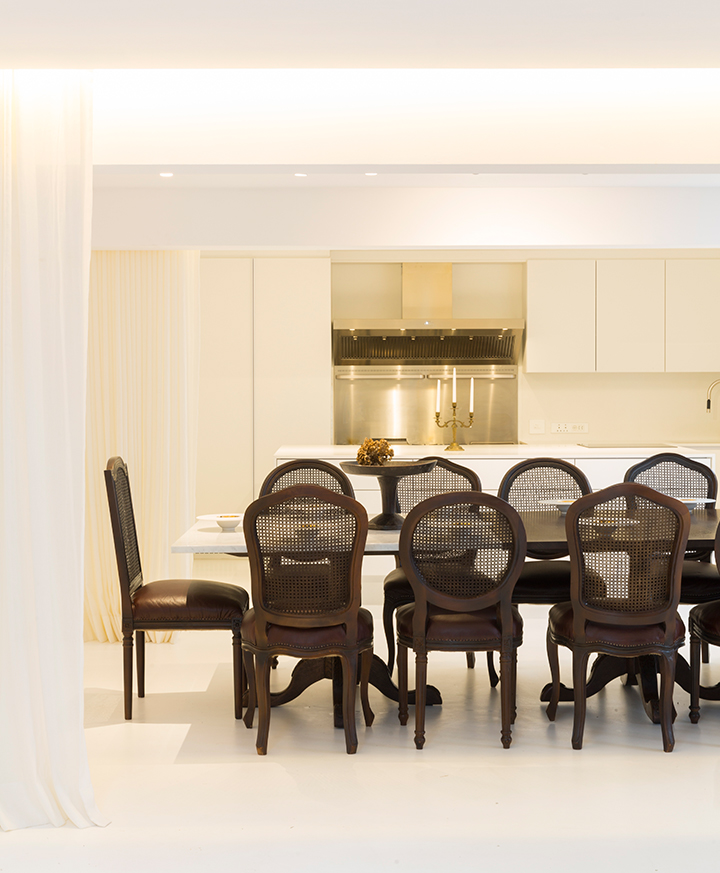BY LISA WITEPSKI PHOTOGRAPHS BY JAC DE VILLIERS
Jan Hendrik van der Westhuizen’s latest South African venture, JAN Innovation Studio, is a place where young chefs are encouraged to put their wildest food fantasies on a plate.
Busy as he is ensuring that his Nice-based restaurant, JAN, maintains its Michelin-star standards and planning for his next endeavour, KLEIN JAN (which will open at the Tswalu Kalahari Reserve in 2020), Jan Hendrik says that he doesn’t see his work as, well, work. “I’m far too busy enjoying myself and playing,” he smiles.
Clearly, playing is a big thing for Jan Hendrik. It is, in fact, his reason for establishing JAN Innovation Studio. “The idea literally just came to me. I realised that we’re always so busy with the current service, pushing out plates, that we give no thought to what’s going to happen next. We’re not thinking about innovation.”
The introduction of JAN the Journal went some way to address this. Jan Hendrik says that he created it as “a playground, a vehicle for playing with recipes”, which made his food more accessible, especially to home cooks. JAN Innovation Studio takes the ethos one step further, however, providing a physical space where young chefs “are pushed to make mistakes”.
Jan Hendrik is clear on the fact that the studio is not a training school; rather, it’s a place where a team of chefs united by their openness to experimentation and creativity can express and satisfy that curiosity. This milieu of inquisitiveness is fostered further by the studio’s collection of literature – Jan Hendrik has set out to create South Africa’s largest cookbook library – as well as its proximity to JAN the Journal’s offices. “The idea is that people hop between the two sites, taking note of what each is experimenting with and putting their own spin on it, so that we have a cross-pollination of ideas,” he explains.
While the venue might not be a school, there’s no doubt that a lot of learning takes place there. Jan Hendrik’s plan is to rotate teams of chefs through its doors; for example, the chefs from KLEIN JAN will spend some time there, while the current Studio team travels up to the Kalahari. “We have some outstanding natural talent in South Africa, and they’re hungry for more. I’m talking about people who have never gone further than, say, Kuruman, and who have been baking bread the traditional way for 30 years. The Studio gives us the space to introduce them to a whole world of bread. We’ll also show them how to photograph their dishes, because part of being a chef is documenting your work.” Everyone is welcome, he adds, so long as they have a real passion for food.
Jan Hendrik’s enthusiasm for raising up the next generation of chefs in such a manner is palpable. He speaks excitedly about JAN’s new alliance with the French Embassy, which makes it possible for South African students to study in France. But, while this is an undeniable achievement, he’s adamant that the honing of such skills shouldn’t come at the price of forgetting the basics of cookery. After all, his own love of food was cultivated by a childhood of humble South African dishes, and these are the flavours he still loves. That’s why his emphasis at the Studio is on perseverance, rather than perfection. “We want everything that comes out of the space to be fresh. The big perception about chefs at the moment is that it’s a tough job, and there’s a certain stereotype emerging. But I think that the kitchen should be a soft, gentle place. I can taste food that’s been made with arrogance – there’s just something not right. It doesn’t taste real.”
One of the reasons such attitudes have come about, he continues, is because the food world is so “precious”. “But, come on, it took hundreds of years to come up with crème anglaise,” he points out.
That’s why he’s not pushing for the dishes dreamed up in the Studio to be flawless, or to conform to prevailing ideas of what food “should” be like. He’s far more interested in seeing what can be done with whatever ingredients are to hand. He uses his research on the food of the Northern Cape, which will inform KLEIN JAN’s approach, as an example: “We’ve researched the food of the Kalahari and ways of cooking; the materials available, including sand and even air.
“We go too far to find something new,” Jan Hendrik insists. “Students always ask me about the next big thing, and I answer with a question of my own: What did you eat as a child?” This is the philosophy that informs the Studio, making it a place of invention, reinvention, inspiration and innovation – playtime on a plate.
JAN Innovation Studio in not a walk-in space, although it will be open to the public on selected evenings. See more on Jan Hendrik’s blog http://bit.ly/2kiEdrG.
JAN INNOVATION STUDIO, 1ST FLOOR, 87 KLOOF STREET, GARDENS, CAPE TOWN, 8001; JANHENDRIKBLOG.COM, JANTHEJOURNAL.COM

